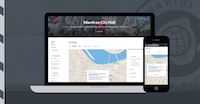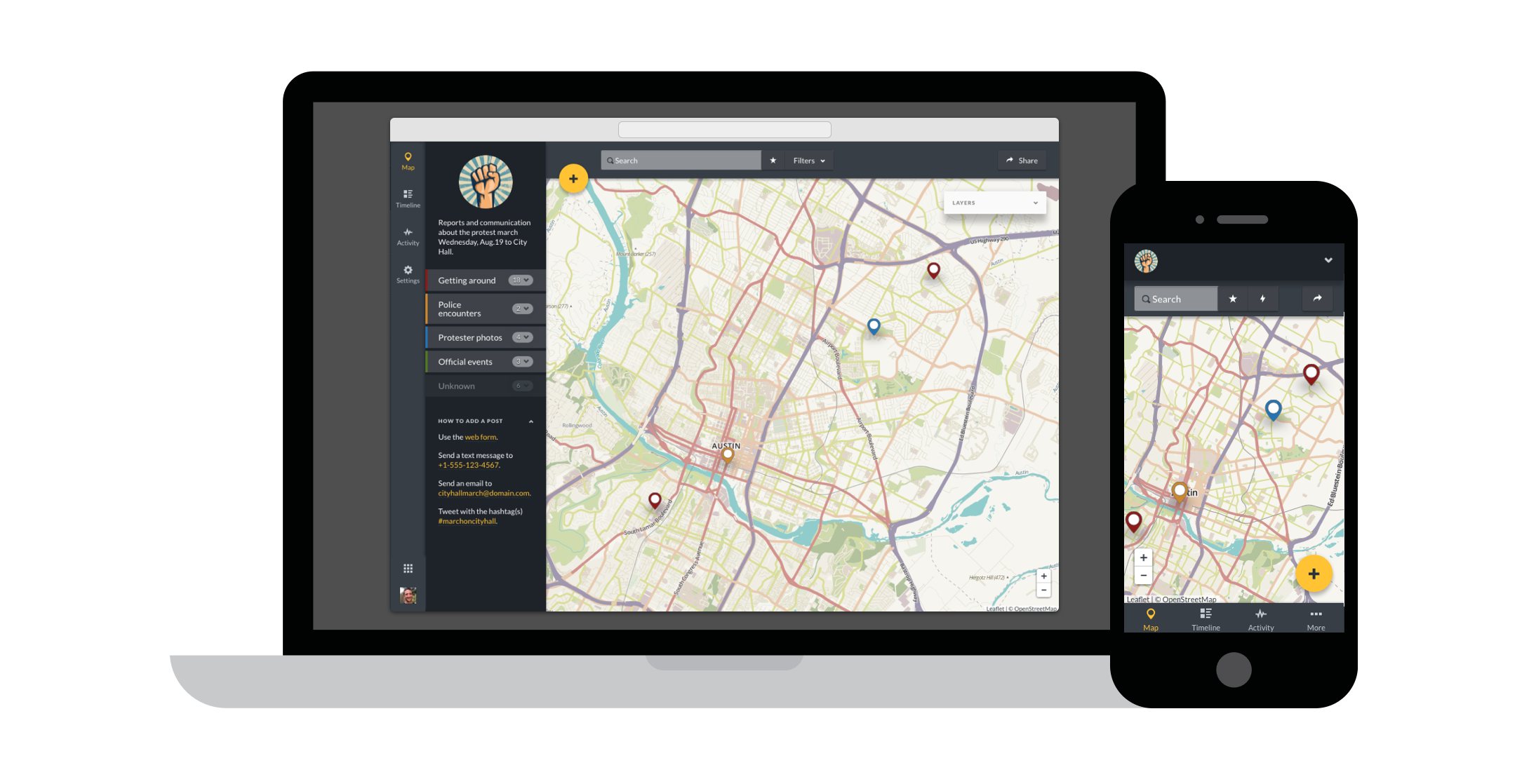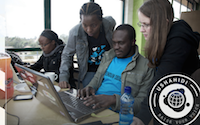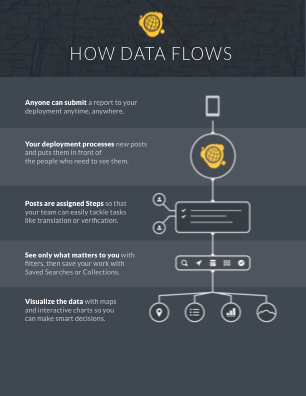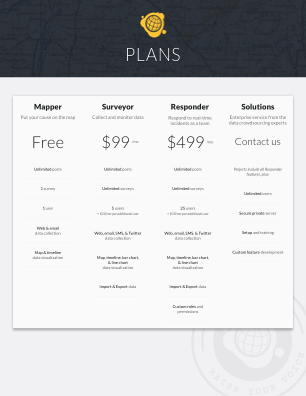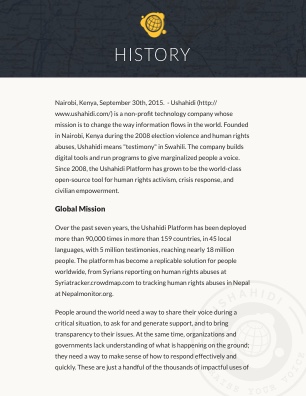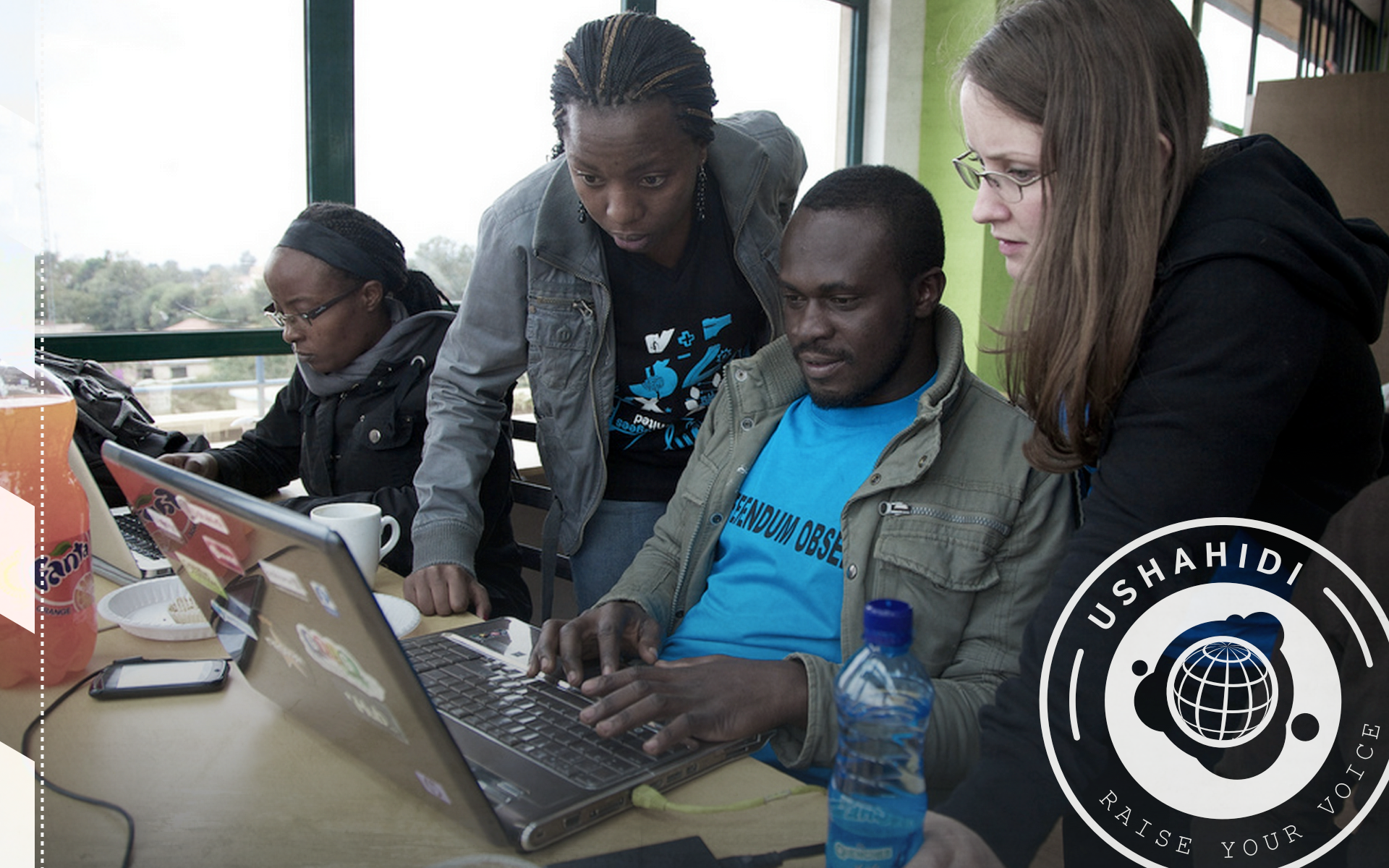
Seven years after putting crowdsourcing on the map, Ushahidi is changing the way information flows again. The Kenyan-born tech company that ignited the tech revolution in Africa released a total re-imagination of its flagship service today, empowering anyone to gather reports from anywhere, anytime.
People in 159 countries have created more than 90,000 Ushahidi deployments since 2008 to gather information from people on the ground, including reports of violence in Syria and calls for help from earthquake victims in Nepal.
“Over the past seven years, we have been learning and innovating,” Ushahidi Deputy Executive Director Daudi Were said. “We have released two versions of Ushahidi, we built SMS Sync, built two versions of Crowdmap, built SwiftRiver, and built RollCall. We nurture innovation through programmes like Making All Voices Count and Resilience Network Initiative. This success has served to tell us one thing: we are only at the beginning of this journey. There is still a lot of work to be done. We need to stay curious, always innovating, always questioning.”
Ushahidi deployers’ experience with the crowdsourcing service spawned four critical advancements that the company integrated into its release today, giving deployers unrivaled control over the data they collect and the stories they tell.
Collect meaningful data
While Ushahidi has faithfully helped collect user-submitted reports from a website, email, or text message, deployers today need to gather information from a range of services, like Twitter, and devices, like sensors. With its launch today, Ushahidi now provides built-in support for gathering data from social media services, RSS, and remote devices.
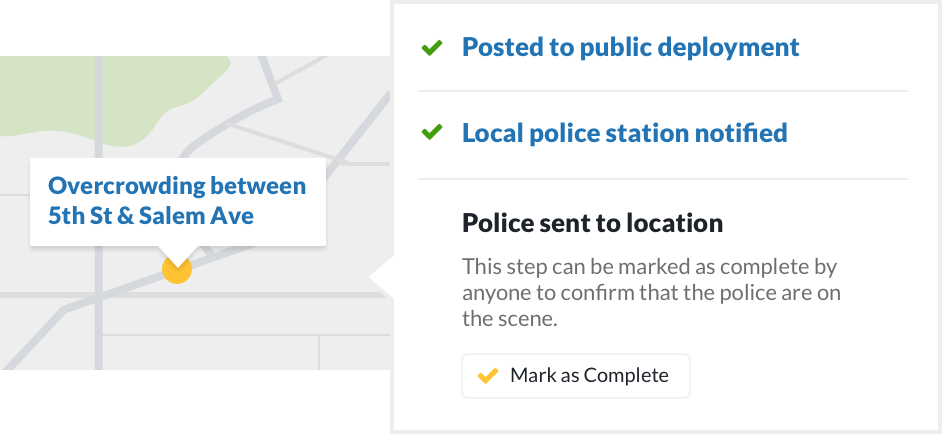
Get the real-time pulse
Deployers told Ushahidi that seeing a collection of submitted reports wasn’t enough: They need a living timeline to show them what’s happening within their deployment at any given moment. Ushahidi answers that call with a new ‘Activity’ view, where deployers can see notifications regarding new posts, revisions, and users.
Respond to issues
With each new Ushahidi deployment comes an increasingly larger team of people operating it. Because each team member’s role is different, Ushahidi re-imagined its service to help those people highlight what matters to them with a new feature called “Steps.” The feature is baked into Ushahidi’s improved “Post Types,” which allow deployers to customize the structure of the data that they’re gathering. That structure includes “Steps,” so that teams can triage tasks, like translating or verifying a post. These breakthroughs make it simple for teams to control how information flows through their deployment and respond quickly to a developing situation.
Tell your story
Maps are the bedrock of Ushahidi. They’re a compelling way to explore information. But deployers also use Ushahidi today to work with data that begs to be viewed in graphs. So today’s release includes two new ways to view a deployment’s data: Bar Chart and Timeline. Along with Map and List views, coupled with powerful filters, Ushahidi gives teams the tools necessary to make smart decisions as an event unfolds.
Plans
Anyone can create an Ushahidi deployment today at ushahidi.com, where they can choose from two plans to match their needs:
- Mapper, Free: 150 posts, 1 customizable Post Type.
- Surveyor, $199/month: 1,000 posts, 5 customizable Post Types.
For a complete list of features included in each plan, visit ushahidi.com/plans
.
Press contacts
Michelle Hamilton-Page, Ushahidi
- press@ushahidi.com
- Website: ushahidi.com
- Twitter: @Ushahidi
